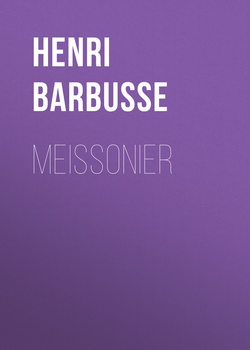Читать книгу Meissonier - Henri Barbusse - Страница 1
INTRODUCTION
ОглавлениеONE day – it was neither in war time nor during manoeuvres – on a July morning, with the sun shining radiantly, a squadron of cuirassiers passed at full gallop across a magnificent field of ripening grain, in the neighbourhood of Poissy, although on every side there were wide reaches of fallow land and pasture.
When this hurricane of horses and men had, like a blazing meteor, devastated and laid low the splendid gold of the crops, two men remained behind, surveying the scene with visible satisfaction and undisguised interest.
One of the two was tall and the other short. The tall man was Colonel Dupressoir, who had directed the manoeuvre. The other, an elderly man, short of leg, and ruddy of complexion, with a long beard, white and silken, and a singularly expressive eye, was the painter, Meissonier. The latter had achieved his object. Thanks to long insistence and the payment of indemnities, he had brought about the passage of cavalry across that field, in order that he might make studies from nature, needed for a painting then in hand, 1807, of how standing grain looks after it has been crushed and trampled by the onrush of a charge.
The whole artist, whose work we are about to study side by side with his life, is summed up in this anecdote. It reveals one of the most typical sides of his temperament, and, consequently, of his talent: a constant and scrupulous endeavour, maintained even at the price of sacrifices that would seem excessive to the layman, to interpret nature precisely as she is. It was this noble ambition – and we shall find other examples of it in the course of an artistic career in which it was the dominant note – that made him say to his pupils, with a conviction that commanded respect: “If I should sketch a horse from memory I should feel that I had been guilty of an insult to nature!”
And it is because he conceived his ideal after this fashion that this unerring painter of so many military types and scenes never attempted to picture skirmishes or battles. It was not that he did not want to, or had not cherished the dream of doing so. But he had never seen a battle; and a battle is a thing that cannot be reconstructed, like a marching column or a detail of camp life. Accordingly he painted none, because he decided, with a certain loftiness, that he did not really know what a battle was!
Let us keep this attitude of mind before us, and even underscore it in our memory. For this alone, in a vague way, would suffice to characterize the artist with whom we are concerned; and his whole long, rich, and fruitful career may be summed up as a successful and varied application of one great principle: devout and inflexible respect for reality.
